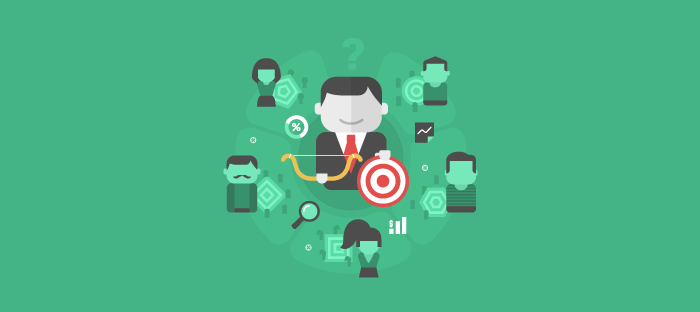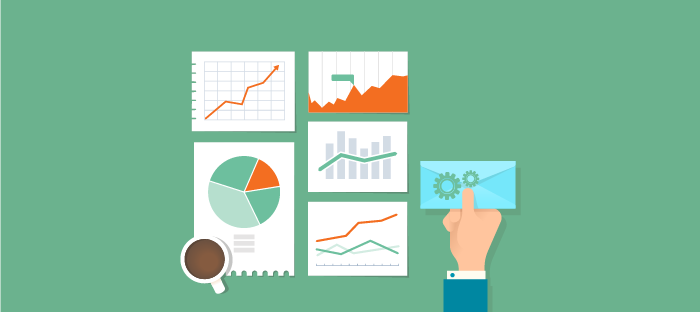Email Segmentation Tips: Strategies for Improving Your Email Marketing

I’m currently reading five books. Fiction, non-fiction, self-help. I’ve got one for every mood. I read whatever appeals to the frame of mind I’m in at any moment on any given day.
I fold a piece of paper in half, write down the title and author of every book I read during the year and use that as a bookmark. As the Christmas season approaches, and parking spots at the mall get farther from the entrance, I review the titles I’ve read during the previous 11 months and choose the ideal book for everybody on my Christmas list.
People complain about Christmas shopping. What’s the big deal? Fortunately, I come from a family of prolific readers. It takes me 15 minutes.
Marketers should take the same approach when developing email marketing strategies around segmenting, or breaking down their “master” list into smaller segments that allow them to send the right content to the right person at the right time.
Every e-mail address on a marketer’s list represents an individual. Marketers shouldn’t send every person the same email, just like I never send everybody in my family the same book.
Email segmentation pays dividends
We know that marketers who segment their email lists to send more targeted content have a higher ROI and fewer of their emails end up in SPAM folders.
Related Content: Why Email Marketing Still Works and How to Send Better Emails
Consider this data reported by HubSpot:
- Emails sent to segmented lists receive 62% more clicks than emails sent to non-segmented lists.
- 39% of marketers see better open rates with segmented lists.
- 28% percent see lower opt-out and unsubscribe rates.
- 24% see better email deliverability, increased sales leaders and more revenue.
So really, it’s not about whether you should segment your list. The real bang comes from how you use email segmentation.
Get creative with your segments
Geography, age, gender, buyer personas, company size and seniority are easy options. You can also segment subscribers who have downloaded an ebook, replied to a call to action or mentioned your product, service or company on social media.
Marketing intelligence software can take that even further by segmenting based on how many social media followers a lead has, what search terms they choose when visiting your website and other granular data that’s most relevant to your specific company or business.
These, however, might be somewhat obvious. For the real pros out there, you can get even more granular.
Here are some lesser known ways to engage in more targeted conversations with potential customers.
Try these, and you’ll convince your boss that you’re an email marketing wizard.
- Familiarity: How much does a lead or contact know about your brand, product or service? Would you describe their knowledge as beginner, advanced or expert? Content could be specifically targeted to the subscriber’s level of understanding to maximize ROI.
- Device: It’s important to know whether subscribers access their emails via mobile or desktop devices because each delivers markedly different user experiences. Mobile users are likely to be more receptive to a message designed for a smaller screen while desktop users may have different preferences.
- Satisfaction: Satisfaction indexes are a popular way to gauge how pleased customers are with a product or service. Customers you’ve delighted might be ripe for reviews and referrals. Less satisfied customers may benefit from more educational materials or a special offer.
- Form abandonment: A potential customer is in the middle of filling out the form you spent hours developing, when the school calls to report a sick child … the boss beckons … a neighbor knocks … or the dog escapes. If the prospect took the time to begin filling out the form before life interrupted, it may be worth nurturing that lead in an attempt to lure them back to the site and complete the form.
- Preferences: Your goal is to deliver the right content to the right person at the right time, right? Then why not let them decide what time is most convenient for them? Ask leads or potential customers when they prefer to receive emails and segment accordingly.
Combining segments makes it even better
These are just a few examples of ways your list can be segmented that will hopefully spark more original thoughts and ideas specific to your needs.
Remember, you can combine segments by coupling leads who abandoned a form, for example, with age, geography, seniority or whatever you think will bring the highest returns.
In case you haven’t noticed, the days of email blasts have gone the way of folded maps, floppy disks and fax machines. If you want to close leads into customers, you need to send them the most relatable content – because although Aunt Edna might devour historical fiction, she might be far from delighted if she unwrapped a sexy romance novel on Christmas morning.
But then again, you never know. Aunt Edna could surprise you!
Another great way to boost the results of your email marketing is to freshen up the copy you write. Download our Persuasive Copywriting Guide for great tips on choosing the words and phrases that encourage your readers to take the action you want!





